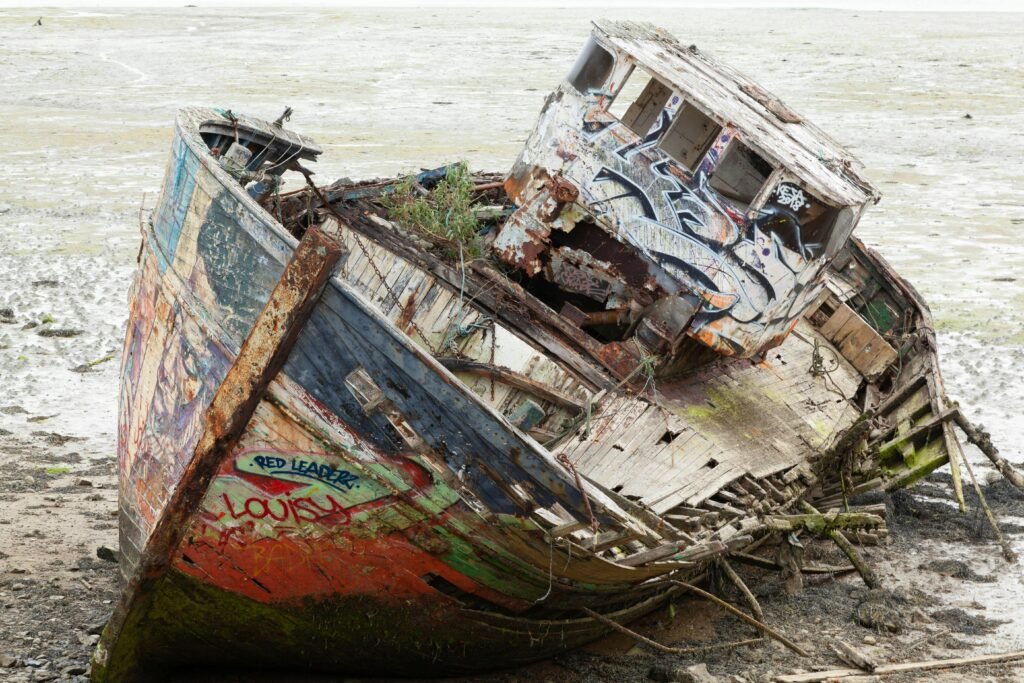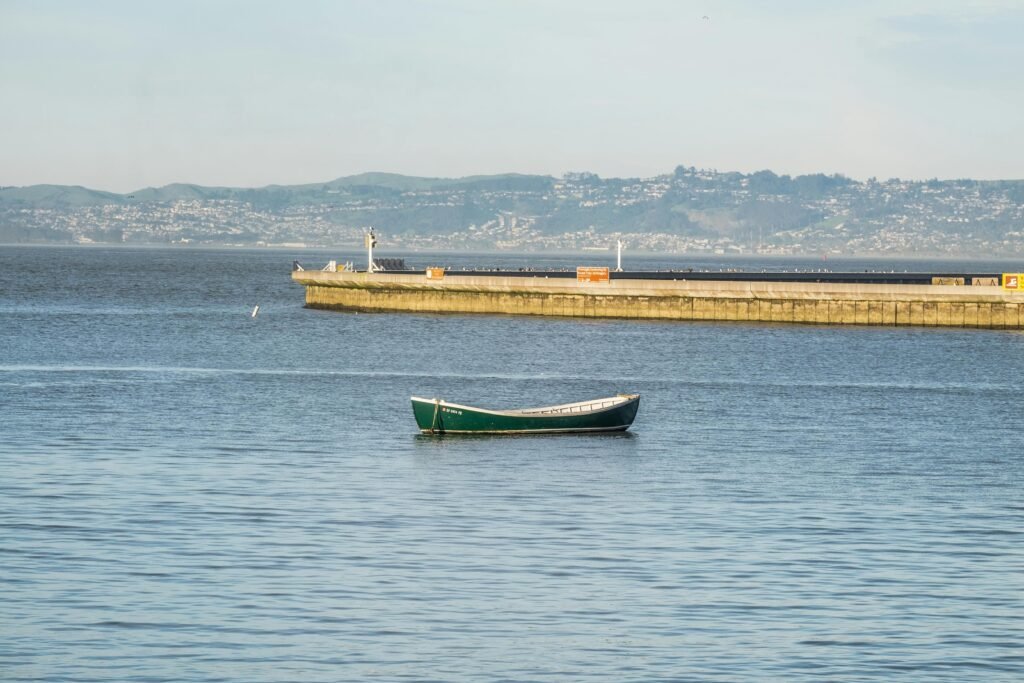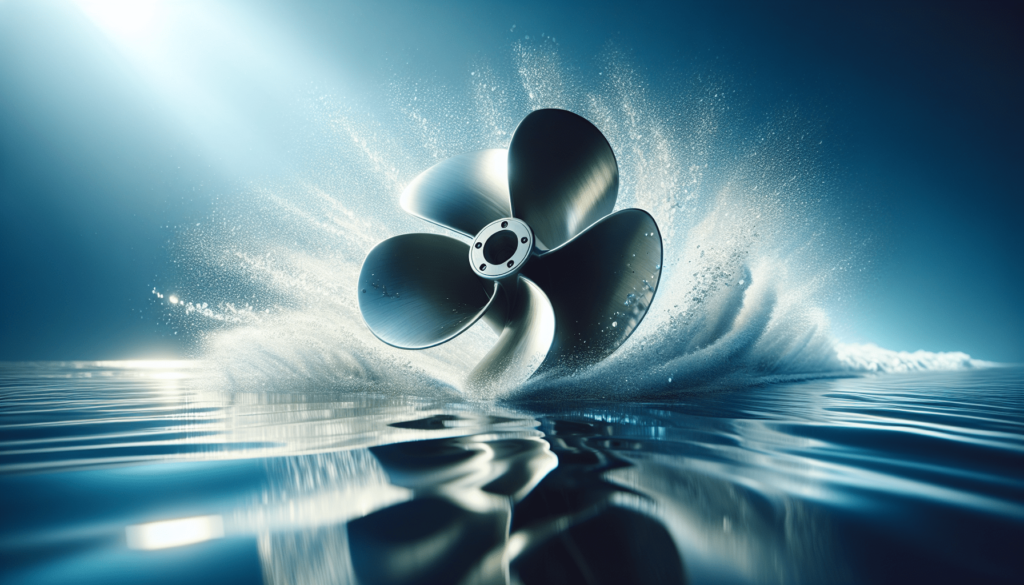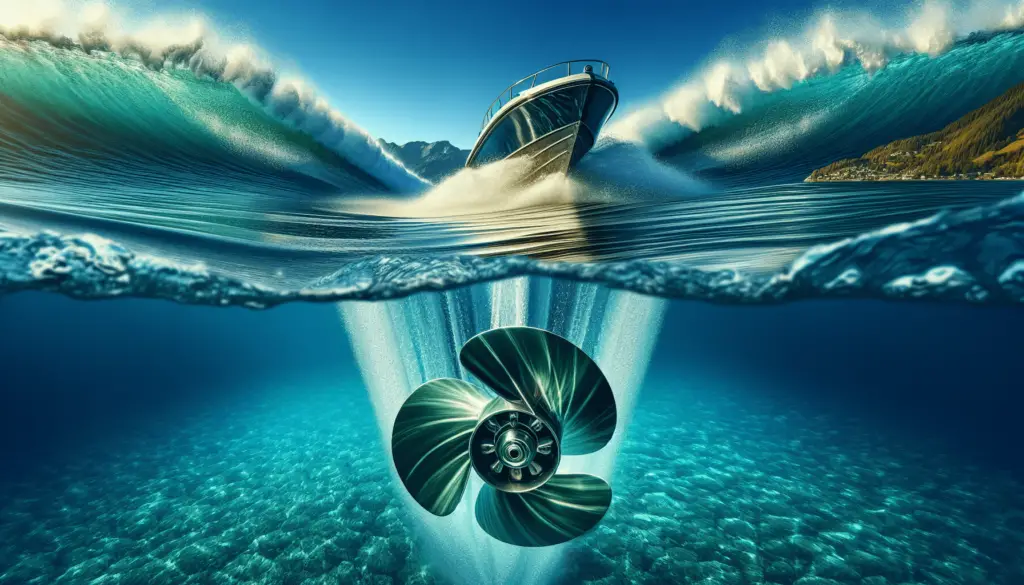Are you ready to take your boating experience to the next level? Look no further than “The Ultimate Guide to Modifying Your Boat for Speed and Fuel Efficiency.” In this comprehensive article, you’ll discover practical tips and expert advice on how to optimize your boat’s performance, allowing you to spend more time enjoying the open waters and less time at the fuel pump. Whether you’re a thrill-seeking thrill-seeker looking to shave off those precious seconds in a race or a passionate explorer seeking to extend your time on the water, this guide has got you covered. Get ready for an exciting journey of boat modification possibilities that will transform the way you navigate the waves.

Choose the Right Propeller
Understand How Propellers Work
When looking to modify your boat for speed and fuel efficiency, it’s important to start with the propeller. Understanding how propellers work is crucial in choosing the right one for your boat. Propellers consist of rotating blades that generate thrust by pushing water backwards. The size and shape of the propeller blades, known as pitch, affect the boat’s overall performance. The angle and pitch of the blades determine the boat’s speed and efficiency, so selecting the correct propeller size and pitch is essential.
Determine the Correct Size and Pitch
Choosing the correct size and pitch of the propeller can greatly impact your boat’s performance. The size of the propeller is determined by its diameter. The larger the diameter, the greater the amount of water the propeller can grip and push, resulting in more thrust. On the other hand, the pitch of the propeller refers to the distance the propeller would travel in one complete revolution through a solid medium. A higher pitch propeller is suitable for higher speeds, while a lower pitch propeller is better for slower speeds and heavier loads. Consulting with a marine professional or referring to your boat’s manual can help you determine the right propeller size and pitch for your specific boat.
Consider Different Propeller Materials
In addition to selecting the right size and pitch, considering different propeller materials can also contribute to improving speed and fuel efficiency. Boat propellers are commonly made from stainless steel or aluminum. Stainless steel propellers are known for their durability and resistance to corrosion, making them a good choice for saltwater boating. Aluminum propellers, on the other hand, are lighter weight and more affordable, making them a popular choice for smaller boats and freshwater boating. Each material has its own advantages and disadvantages, so it’s important to consider your boating needs and preferences when choosing the right propeller material.
Reduce Weight
Remove Unnecessary Items
Reducing the weight of your boat is another effective way to improve its speed and fuel efficiency. One of the simplest steps you can take is to remove any unnecessary items from your boat. Over time, boats tend to accumulate various items that may not be vital for your boating experience. Take the time to evaluate the items on your boat and remove anything that isn’t essential. By decluttering and removing excess weight, you’ll decrease the resistance on your boat’s hull and allow it to glide through the water with less effort.
Use Lightweight Materials
Choosing lightweight materials for your boat can have a significant impact on its overall weight and performance. When making modifications or purchasing new equipment, opt for materials that are specifically designed to be lightweight. For example, replacing heavy wooden seats with lightweight aluminum seating can make a noticeable difference. Additionally, using lightweight composite materials for equipment such as fishing rod holders or storage compartments can further reduce weight. By utilizing lightweight materials, you’ll not only improve your boat’s speed and fuel efficiency but also enhance its handling and maneuverability.
Improve Hull Design
Clean and Smooth the Hull
The condition of your boat’s hull greatly affects its speed and fuel efficiency. Over time, algae, barnacles, and other marine organisms can attach themselves to the hull, creating drag and reducing performance. Regularly cleaning and smoothing the hull is essential for maintaining optimal speed and fuel efficiency. There are various methods to clean the hull, including pressure washing, scrubbing with appropriate cleaning solutions, or using specialized hull cleaning tools. Removing any buildup and ensuring a smooth surface will minimize drag and allow your boat to move through the water more efficiently.
Consider Hydrofoil Additions
Hydrofoils are additional features that can be installed on the hull of your boat to improve speed and fuel efficiency. Hydrofoils work by lifting the boat’s hull out of the water, reducing drag and increasing the boat’s overall performance. These additions can be particularly beneficial for boats that tend to plow through the water at lower speeds. Hydrofoils can be installed on the outboard motor or integrated into the boat’s hull design. Consulting with a marine professional can help you determine if hydrofoils are a suitable modification for your boat.
Optimize the Trim
Adjusting the trim of your boat can also have a significant impact on its speed and fuel efficiency. The trim refers to the angle of the boat’s hull in relation to the water’s surface. By optimizing the trim, you can minimize drag and maximize the boat’s performance. Trim tabs or trim plates can be installed to fine-tune the trim and adjust the boat’s attitude while underway. These additions allow you to raise or lower the stern of the boat, reducing drag and improving speed. Experimenting with different trim settings and consulting with a marine expert can help you find the optimal trim position for your boat.
Upgrade Engine and Fuel System
Consider High-Performance Engines
Upgrading your boat’s engine is a significant modification that can greatly enhance speed and fuel efficiency. High-performance engines are specifically designed to deliver more power and efficiency, resulting in improved overall performance. When considering a high-performance engine, it’s important to evaluate factors such as horsepower, torque, and fuel consumption. Additionally, consult with a marine professional to ensure compatibility with your boat and consider any necessary modifications or upgrades to the boat’s fuel system for optimal performance.
Install a Fuel Injection System
Installing a fuel injection system is another way to improve your boat’s fuel efficiency. Fuel injection systems deliver fuel consistently and precisely, ensuring that the engine receives the correct fuel-to-air ratio for efficient combustion. Compared to traditional carburetors, fuel injection systems provide better fuel atomization and increased overall fuel efficiency. By upgrading to a fuel injection system, you’ll optimize fuel consumption and potentially experience improved throttle response and performance.
Upgrade to a Leaner Carburetor
If your boat has a carbureted engine, upgrading to a leaner carburetor can also improve fuel efficiency. A leaner carburetor adjusts the fuel-to-air ratio, providing a more optimal mixture for combustion. This adjustment can lead to improved fuel economy and better overall performance. Consult with a marine professional or engine specialist to ensure you select the right carburetor for your boat’s engine and desired modifications.

Optimize Fuel Consumption
Monitor Fuel Consumption
To maximize fuel efficiency, it’s important to monitor your boat’s fuel consumption during various conditions and speeds. Tracking how much fuel your boat consumes allows you to identify potential inefficiencies and make the necessary adjustments. Establishing a baseline fuel consumption rate and regularly comparing it to current usage will help you identify any changes or potential issues. Monitoring fuel consumption can also provide insights on the impact of different modifications or upgrades that you make to your boat.
Use Fuel Additives
Using fuel additives is another method to optimize fuel consumption in your boat. Fuel additives are chemicals that are added to the fuel to improve performance, combustion, and efficiency. There are various types of fuel additives available, each serving different purposes such as reducing engine deposits, increasing lubricity, or stabilizing fuel during storage. Consult with a marine professional or refer to your boat’s manual to determine which fuel additives are recommended for your specific engine and fuel type.
Keep Fuel Tanks Clean
Ensuring that your boat’s fuel tanks are clean and free from contaminants is essential for maintaining optimal fuel efficiency. Over time, sediments and impurities can accumulate in the fuel tanks, which can clog fuel lines and filters, negatively affecting engine performance. Regularly inspecting and cleaning the fuel tanks, as well as using fuel filters and water separators, can help prevent these issues. Consult with a marine professional or refer to your boat’s manual for instructions on properly cleaning and maintaining the fuel tanks.
Enhance Aerodynamics
Install a T-Top or Hardtop
Enhancing the aerodynamics of your boat can improve its speed and overall efficiency. Installing a T-top or hardtop can reduce wind resistance and create a more streamlined profile. These additions provide shade and protection while also minimizing drag and improving fuel efficiency. When selecting a T-top or hardtop, consider factors such as weight, material, and compatibility with your boat’s design. Consulting with a marine professional can provide guidance on choosing the right option for your boat.
Use Low-Profile Windshields
Windshields are another component that can impact the aerodynamics of your boat. Using low-profile windshields reduces wind resistance and minimizes the drag caused by air hitting the windshield. Opting for sleek and aerodynamic windshields can significantly improve your boat’s speed and fuel efficiency. Consider materials such as acrylic or polycarbonate that are lightweight and offer excellent clarity. Additionally, ensure that the windshields are securely installed to withstand the forces of high-speed boating.
Consider Bow and Stern Fairings
Installing bow and stern fairings can further optimize the aerodynamics of your boat. These additions are designed to reduce turbulence and drag that occur at the bow and stern, where the boat intersects with the water. Bow fairings improve the boat’s ability to slice through the water, while stern fairings help reduce the turbulence caused by the propeller. By reducing drag in these key areas, you can enhance your boat’s speed and fuel efficiency. Consult with a marine professional to determine the most suitable bow and stern fairings for your specific boat model.

Reduce Drag and Friction
Antifoul the Hull
To reduce drag on your boat’s hull, it’s essential to keep it free from fouling. Fouling occurs when marine organisms such as barnacles or algae attach themselves to the hull, creating resistance and reducing speed. Applying antifouling paint to the hull is an effective preventive measure. Antifouling paint creates a smooth surface that discourages marine growth, resulting in reduced drag and improved speed. When selecting antifouling paint, consider factors such as your boat’s usage, the environment in which it operates, and the type of antifouling technology that best suits your needs.
Use Low-Friction Coatings
In addition to antifouling paint, using low-friction coatings on your boat’s surfaces can further reduce drag and friction. These coatings create a smooth and slippery surface, allowing the boat to move through the water with minimal resistance. Applying low-friction coatings to the hull, propeller, and other underwater components can significantly improve speed and fuel efficiency. Consult with a marine professional or boat maintenance specialist to determine the most suitable low-friction coatings for your specific boat and boating conditions.
Replace Old and Worn-out Parts
Worn-out or damaged parts can contribute to increased drag and friction on your boat. When modifying your boat for speed and fuel efficiency, it’s important to inspect and replace any old or worn-out parts. Components such as worn propellers, damaged rudders, or degraded hull fittings can impede performance and increase fuel consumption. Regularly inspecting and replacing these parts when necessary ensures that your boat operates optimally and efficiently.
Upgrade Steering and Controls
Install a Hydraulic Steering System
Upgrading your boat’s steering system can significantly improve handling and maneuverability, leading to greater speed and fuel efficiency. Hydraulic steering systems provide smoother and more responsive control, reducing effort and enhancing overall operation. Compared to traditional mechanical systems, hydraulic steering allows for precise adjustments and better control, especially at higher speeds. Upgrading to a hydraulic steering system will provide a more enjoyable boating experience while improving your boat’s performance.
Upgrade Throttle and Shift Controls
Upgrading your boat’s throttle and shift controls can also contribute to better speed and fuel efficiency. Installing precision electronic throttle and shift controls, such as those found in modern fly-by-wire systems, improves responsiveness and accuracy. These advanced systems eliminate the mechanical linkages of traditional controls, resulting in precise control and smoother shifting. Upgrading to electronic controls enhances throttle response, reduces engine wear, and optimizes fuel consumption.
Consider Fly-by-Wire Systems
Fly-by-wire systems represent the latest advancement in boat control technology. These systems use electronic sensors and actuators to transmit control signals, eliminating the need for mechanical linkages. Fly-by-wire systems offer precise and instantaneous control, enhancing speed, maneuverability, and fuel efficiency. They also provide features such as synchronization of multiple engines and joystick control. However, the installation of fly-by-wire systems may require professional assistance and may not be suitable for all boat models.

Maintain and Tune Regularly
Follow Engine Manufacturer’s Recommendations
Proper and regular maintenance is key to ensuring that your boat operates at its highest level of performance and fuel efficiency. Following the engine manufacturer’s recommendations for maintenance intervals, inspections, and servicing is essential. Regular oil changes, spark plug replacements, and checking the engine’s cooling system are some of the routine tasks that need to be performed. Adhering to the manufacturer’s guidelines will help prevent issues, maintain optimal engine performance, and save fuel in the long run.
Check and Replace Filters Regularly
Filters play a vital role in keeping your boat’s engine and fuel system clean and free of contaminants. Regularly checking and replacing the engine oil filter, fuel filter, and air filter is crucial for proper engine function and fuel efficiency. Dirty or clogged filters can restrict fuel flow and air intake, leading to decreased performance and increased fuel consumption. Refer to your boat’s manual or consult with a marine professional to determine the recommended filter change intervals for your specific engine and boat.
Adjust and Balance Props
To ensure optimal propulsion and reduce unnecessary vibrations, it’s important to regularly check and adjust the props on your boat. Misaligned or unbalanced props can cause inefficiencies, leading to decreased speed and fuel consumption. Inspect the propellers for any damage or wear and ensure that they are properly aligned. Consider consulting with a marine professional or propeller specialist for comprehensive propeller maintenance, including adjustments and balancing, to maximize performance and fuel efficiency.
Improve Airflow and Cooling
Install Ventilators for Engine Compartment
Proper airflow is crucial for maintaining optimal engine performance and preventing overheating. Installing ventilators or air vents in the engine compartment promotes airflow, allowing heat to dissipate efficiently. Adequate ventilation reduces the risk of engine damage due to excessive heat and improves the overall cooling system’s effectiveness. Consult with a marine professional or refer to your boat’s manual to determine the most suitable type and location for ventilators in your engine compartment.
Optimize Air Intake
Ensuring that your boat’s engine receives clean and ample air intake is crucial for optimal combustion and performance. Regularly inspecting and cleaning the air intake system, including air filters and vents, is essential to prevent restricted airflow. Ensure that the air filters are clean and properly fitted, allowing the engine to breathe easily. Additionally, consider upgrading to high-performance air filters or intake systems that increase airflow and filter efficiency, further enhancing your boat’s speed and fuel efficiency.
Upgrade Cooling Systems
Upgrading your boat’s cooling systems can have a significant impact on both engine performance and fuel efficiency. The engine’s cooling system is responsible for maintaining proper operating temperatures. Upgrading components such as the water pump, heat exchanger, or radiator can improve the efficiency of the cooling system and prevent overheating. Installing additional cooling components, such as water misters or auxiliary fans, can further enhance the cooling system’s capabilities. Consult with a marine professional or engine specialist to determine the most suitable cooling system upgrades for your boat.
By following this comprehensive guide and making the appropriate modifications to your boat, you can significantly improve its speed and fuel efficiency. Remember to consult with marine professionals and refer to your boat’s manual for personalized recommendations and guidance. With the right propeller, reduced weight, improved hull design, upgraded engine and fuel system, optimized fuel consumption, enhanced aerodynamics, decreased drag and friction, upgraded steering and controls, regular maintenance, and improved airflow and cooling, you’ll be well on your way to enjoying a faster and more fuel-efficient boating experience.


